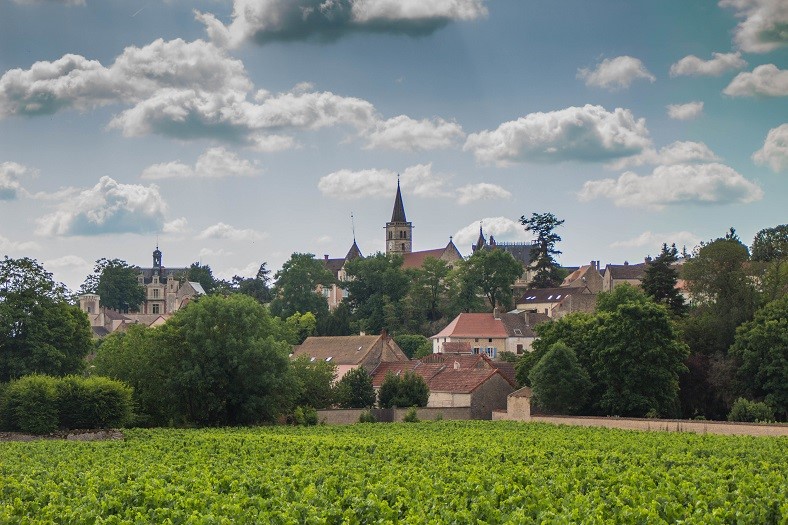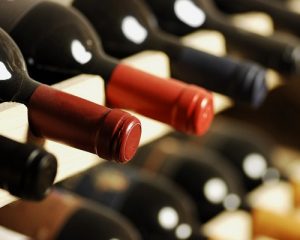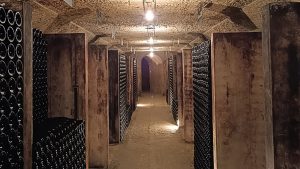
Never heard of Côte Chalonnaise before or it jogs a memory but you can’t recall anything about it? Don’t worry, we have you covered with this article that will reveal all its secrets about this Burgundian hidden gem that will soon be on everyone’s lips. Located between, the Côte de Beaune and Mâconnais, this article will focus on the appellations of Rully and Bouzeron. Part two will arrive in a week or two so be sure to keep an eye out for that too.
Côte Chalonnaise, fine Burgundian terroirs
The Côte Chalonnaise is a long stretch of narrow land in the middle of Burgundy’s winegrowing region. It spans 4,000 hectares, from Chagny in the north to Saint-Genoux-Le-National in the south. Neighbouring both the Côte de Beaune (Rully, the northernmost appellation of the Côte Chalonnaise, practically touches Santenay, the Côte de Beaune’s most southern appellation) and Mâconnais, the Côte Chalonnaise has often existed in the shadow of these two viticultural behemoths. Yet, despite its modest reputation, this dark horse boasts a whole series of fine terroirs across five different municipalities (Montagny, Givry, Mercurey, Bouzeron, and Rully), home to excellent producers and their own fair share of regional style.
Just like its big sister, the Côte de Beaune, the Côte Chalonnaise is organised by a system of appellations divided into three different levels of quality. First of all, the regional appellations that go by the label Bourgogne Côte Chalonnaise, then the Villages wines, and finally Premier Cru. There aren’t any grands crus in these parts. However, there are two aspects that are unique to the Côte Chalonnaise. The Bouzeron appellation allows the local variety Aligoté to be planted along with the region giant that is Chardonnay. On the other hand, the rules of the Montagny appellation only allow Chardonnay vines (in the Côte d’Or, all places where Chardonnay is allowed to be planted also authorise Pinot Noir vines).
In spite of the huge progress made in the region, a reputation for high quantities of low-quality wine still persists in the Côte Chalonnaise. A kind of redemption project is underway, though, with even older images of the region resurfacing: Givry, for instance, was reportedly Henri IV’s favourite wine and was considered the Volnay or Chambolle-Musigny of the south in the 19th century. Even Napoleon was supposedly astonished by the quality of Mercurey wines…
Rully, the birthplace of Crémant and a land of accessible, fine red and white wines
Few people know that Rully is the birthplace of the traditional method of crémant production. Unlike other sparkling wines, crémant must come from a hand-picked harvest and be aged for at least nine months. This idea was imported from Champagne in the early 19th century in response to the increasing attraction for fizz. Since then, the region has kept its tradition for crafting crémant, and the result is often of very high quality, benefitting from the village’s beautiful terroir. If you have never tasted the elegance and finesse of Vitteau-Alberti’s crémants (that have very purse-friendly price tags), you will not know the pureness and quality of the crémants that Burgundy produces. The estate’s Blanc de Blancs, called Agnès, is at the same level as the best non-vintage Champagne, yet it possesses a riper, more vinous style.
Rully is a real gem of a region, producing excellent red and white wines. To the north of the region, the premiers crus Saint Jacques and Du Chaigne have land comparable to that found in Chassagne. The best wines in the centre are whites. Les Pucelles, or Les Grésigny, in the centre of the appellation, offer an elegance that is rare for this part of the côte. Paul and Marie Jacqueson are just one example of excellent producers.
Domaines Jacqueson, Dureuil-Janthial, and A & P de Villaine make some of the most sought after cuvées in Rully. It is in part thanks to them that the sub-region is experiencing something of a renaissance, though many more – for the time being little known – producers are doing great things, too.
Bouzeron – a recent discovery and a flagship variety
Perched at a typically Burgundian altitude of between 201 and 405 metres, the village of Bouzeron boasts a grand total of 141 inhabitants. It was only in 1988 that winemakers were granted permission to call the Aligoté they produced there a Bouzeron wine. Thanks to local domain A & P de Villaine (owned by no other than Aubert de Villaine), the village was recognised as an appellation in its own right.
The high slopes of Bouzeron are perfect for growing Aligoté thanks to the white marl from the Oxfordian geological era. To the north of the appellation lies the excellent plot “Les Corcelles”, from which Domaine du Champ Thémis crafts an excellent, deep and full single-parcel cuvée. On the other side of the Ermitage hill (not the famous one in the Rhône Valley), the limestone rich expression of the soils corresponds to the more mineral, taut and refreshing image of Bouzeron. The north-east facing parcel Les Clous offers a mineral, laser-taut wine. To the south of the appellation, the Les Cordères plot produces a wine with a particularly noticeable limestone energy on the palate. The impressive length on makes this wine, often regarded simply as an aperitif wine, apt to pair with more complex dishes. Try pairing with lightly spiced foods to bring out the mineral profile of this climat. Otherwise, a simple goat’s cheese makes for a superb duo. It’s also worth trying to age your Bouzerons for a few years; you’ll see that, like its big brother Chardonnay, Aligoté has a lot to gain from ageing. With some bottle age, the best of these wines are extremely mineral and deliver highly elegant nuances of stone and citrus on the nose.
Initiated by Domaine A & P de Villaine, much conservation work has been done for Bouzeron’s historic grape variety, Aligoté Doré (golden). Unlike Aligoté ‘vert’ (green), golden Aligoté is endemic to the appellation. It is found amongst certain domains’ oldest vines, as a vestige of when producers selected their plants themselves. Bouzeron chose to conserve this low-yielding grape to protect its exceptional genetic pool and raise the profile of its wines. In short, the future looks bright for Bouzeron.
Instalment two of this guide will take us to Mercurey, the crowning jewel of the Côte Chalonnaise…



